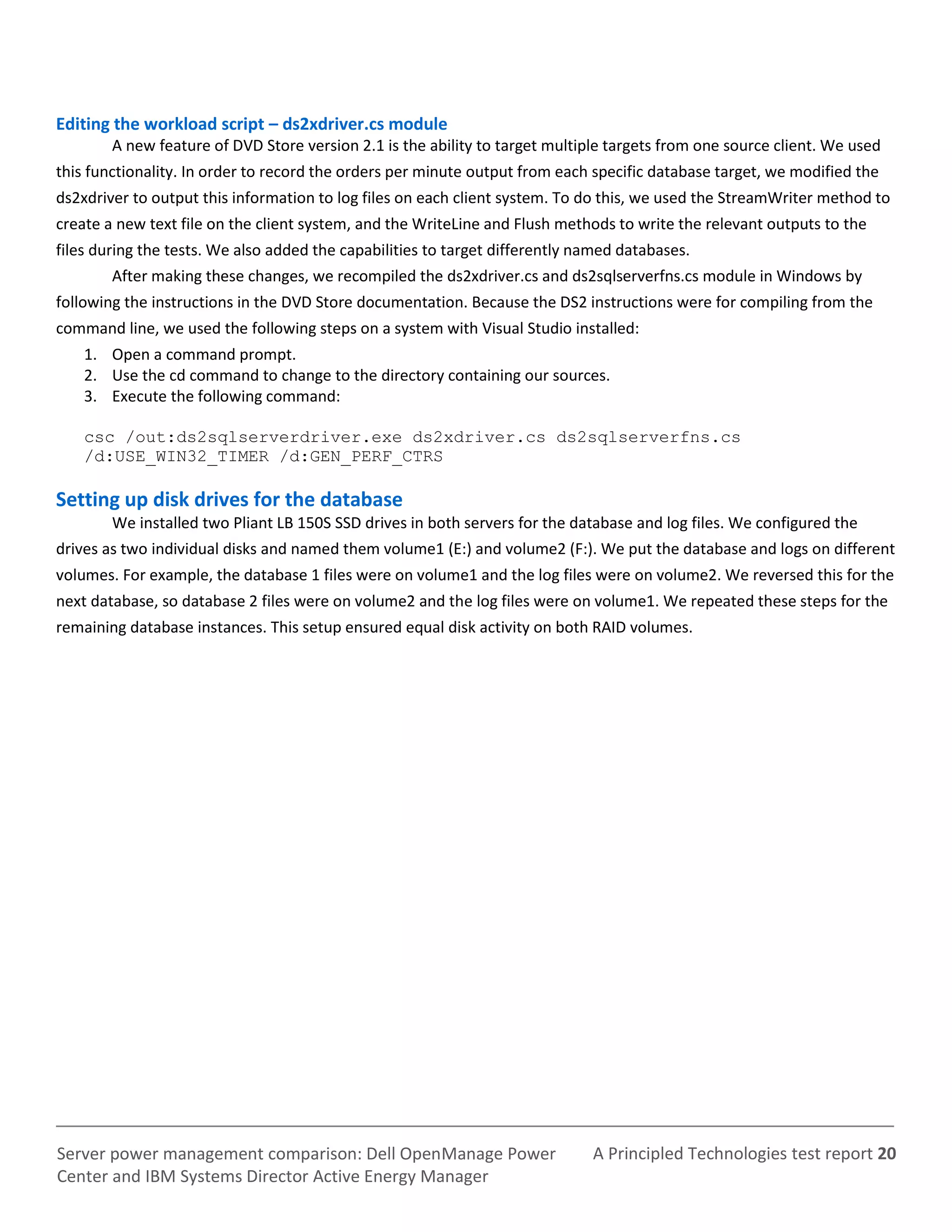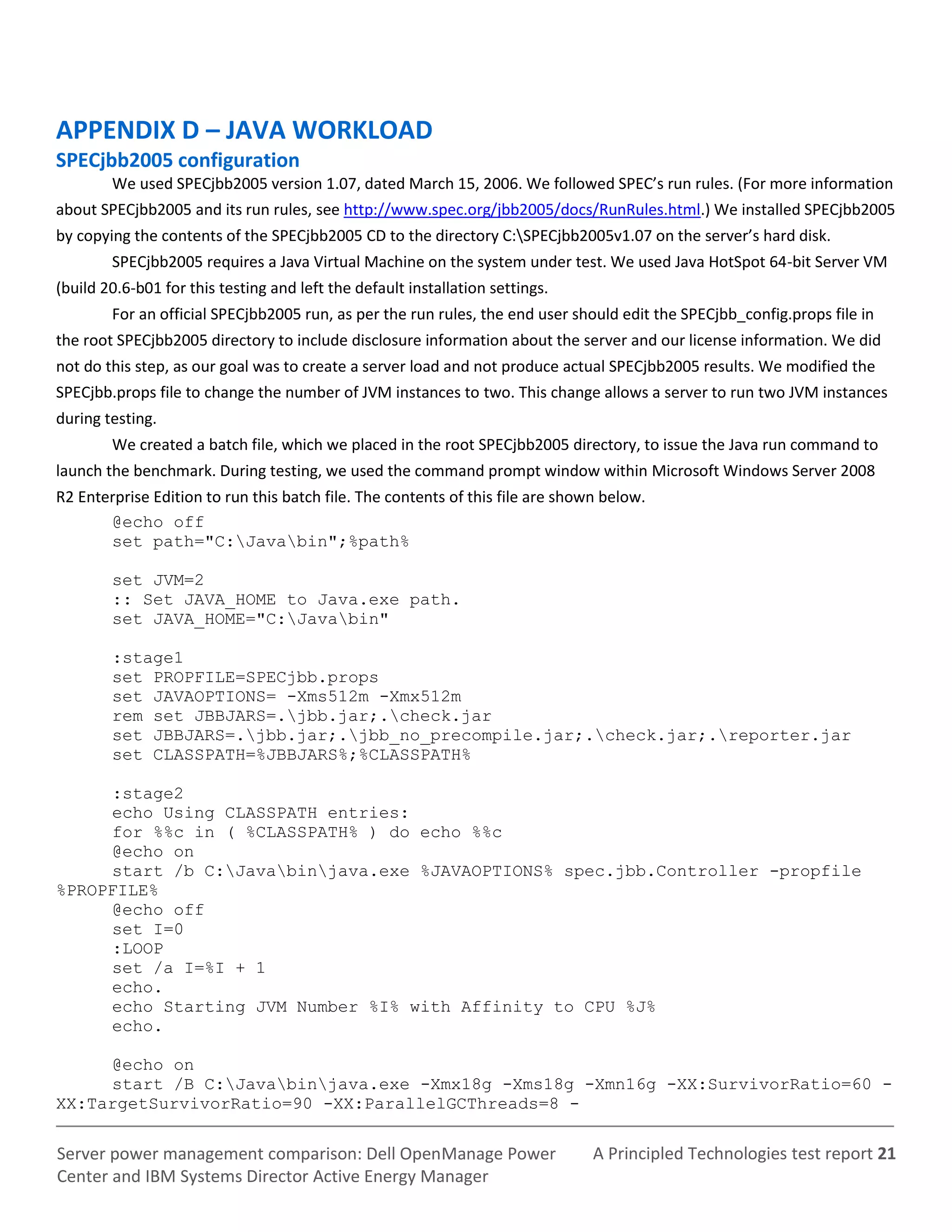The document compares the power management capabilities of Dell OpenManage Power Center and IBM Systems Director Active Energy Manager. It finds that Dell OpenManage Power Center provided more precise power limiting, with actual power usage within 2% of the set limit, while IBM Active Energy Manager's actual usage was 4-8% lower than the limit. This tighter control with Dell allows for greater server density within the same power capacity. The Dell PowerEdge R720 also offered better performance per watt and supports higher temperatures than the IBM System x3650 M4 tested.
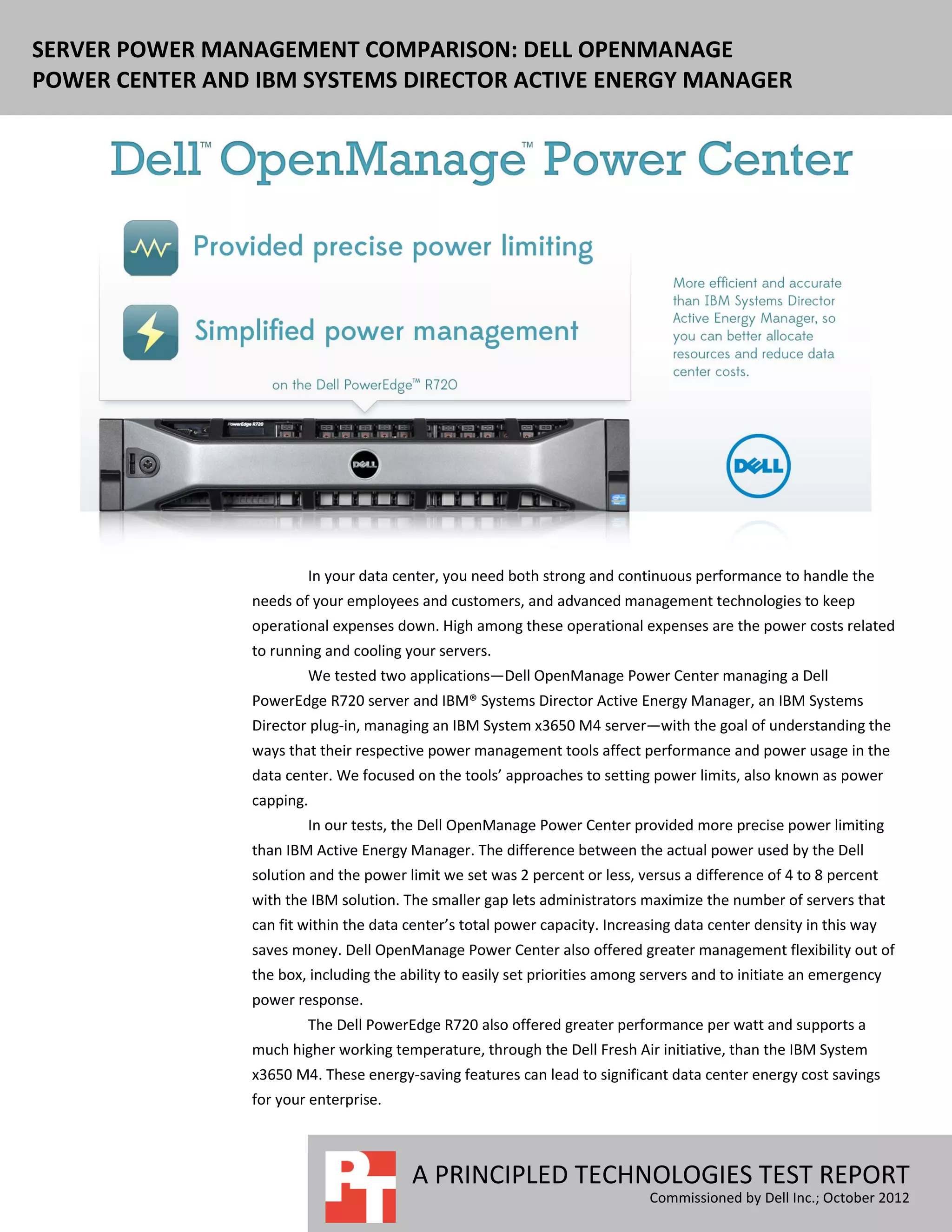
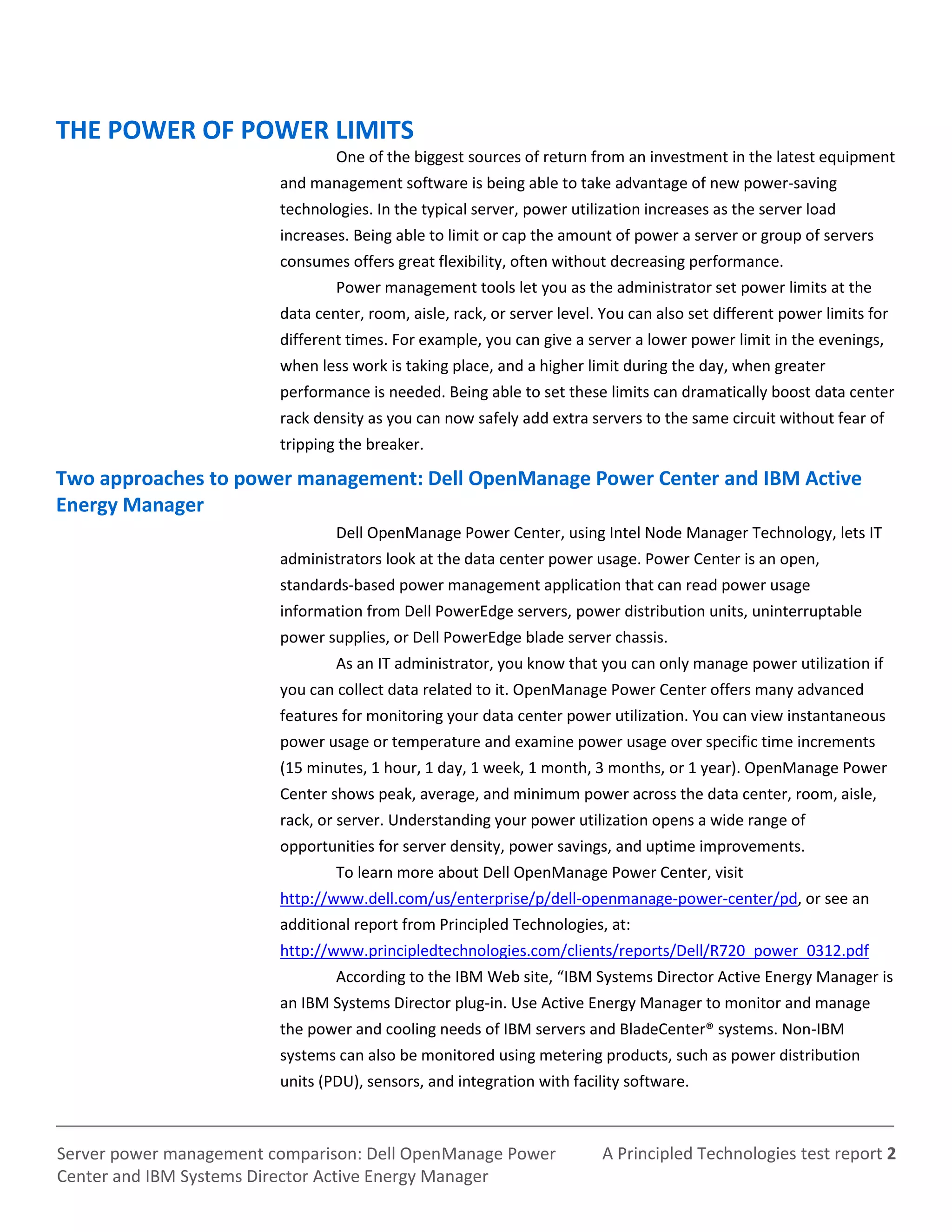


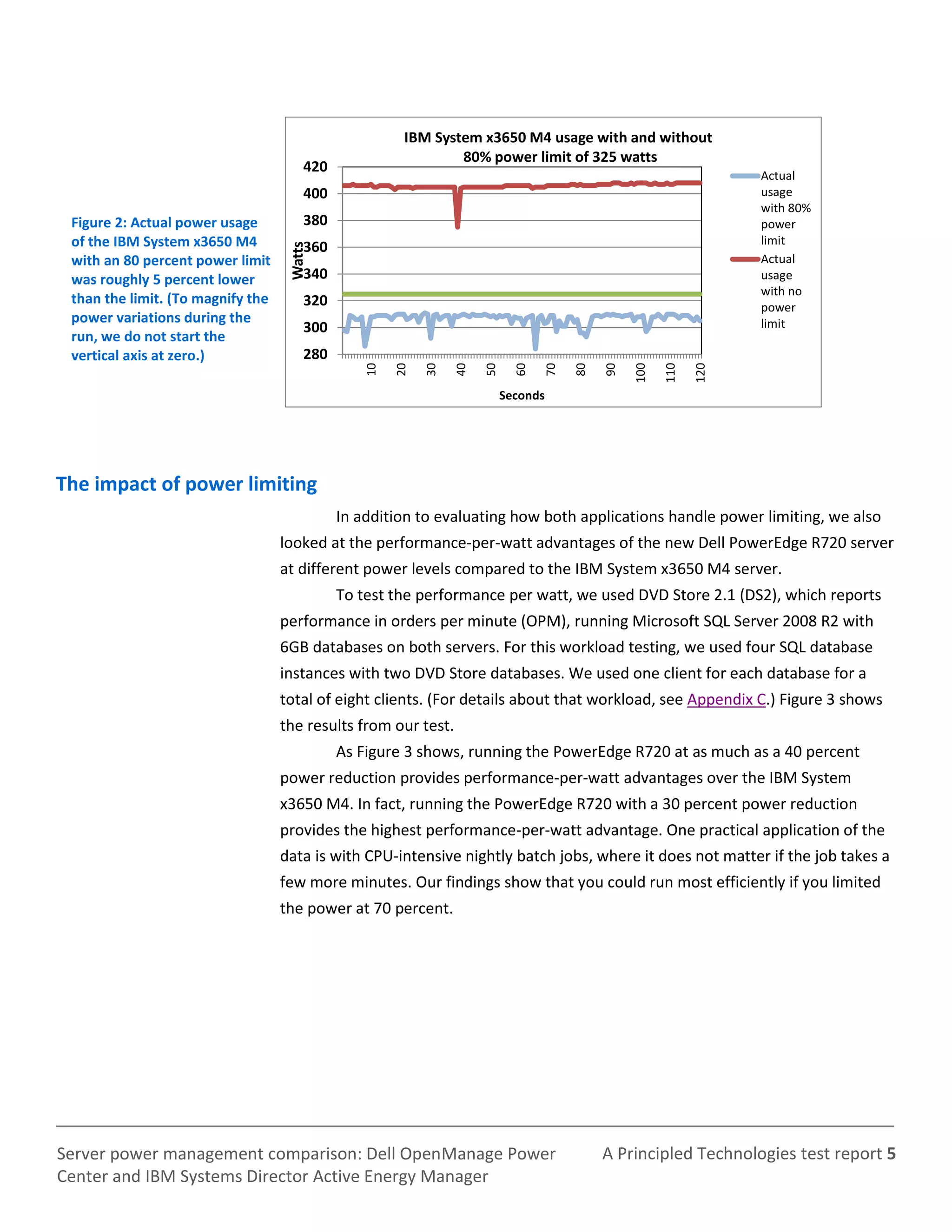
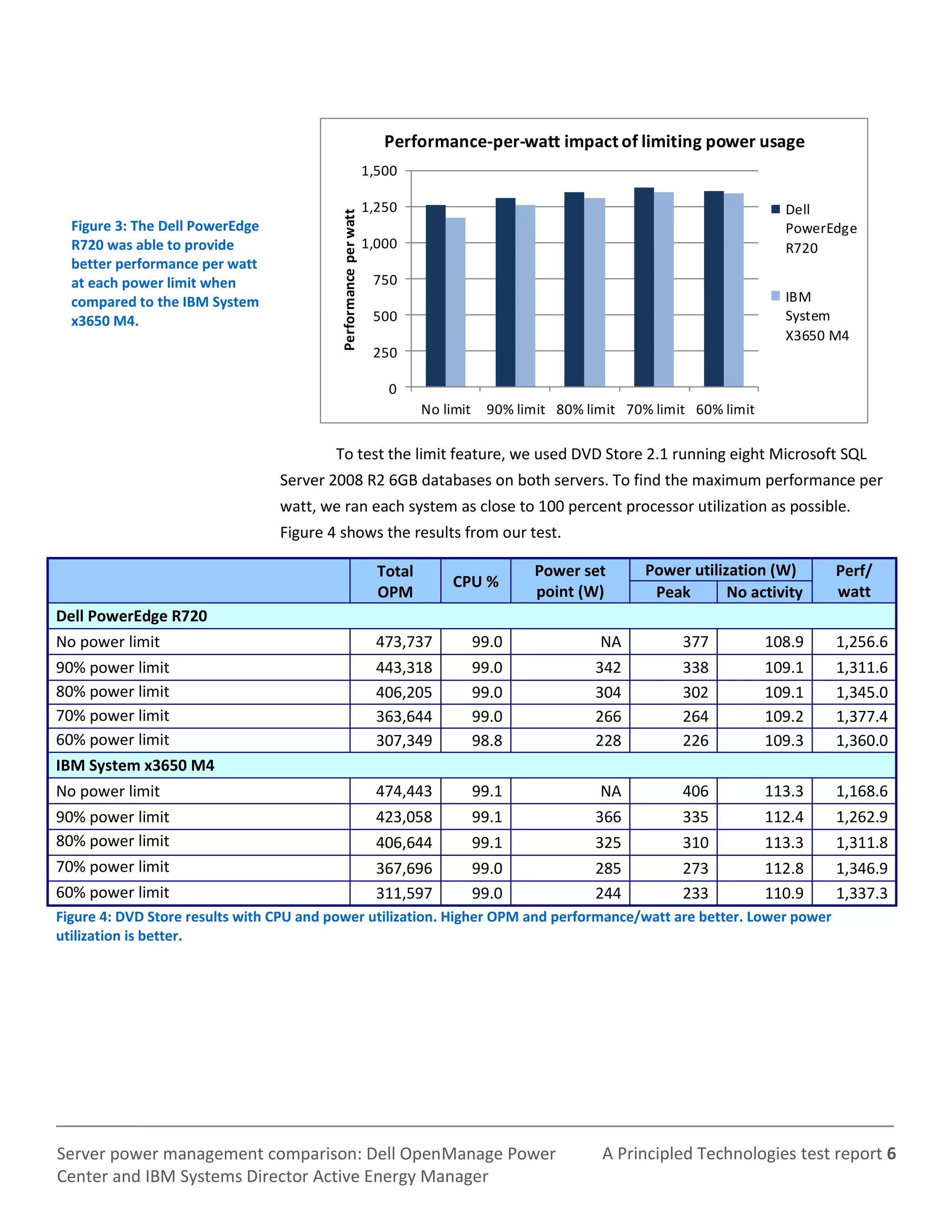
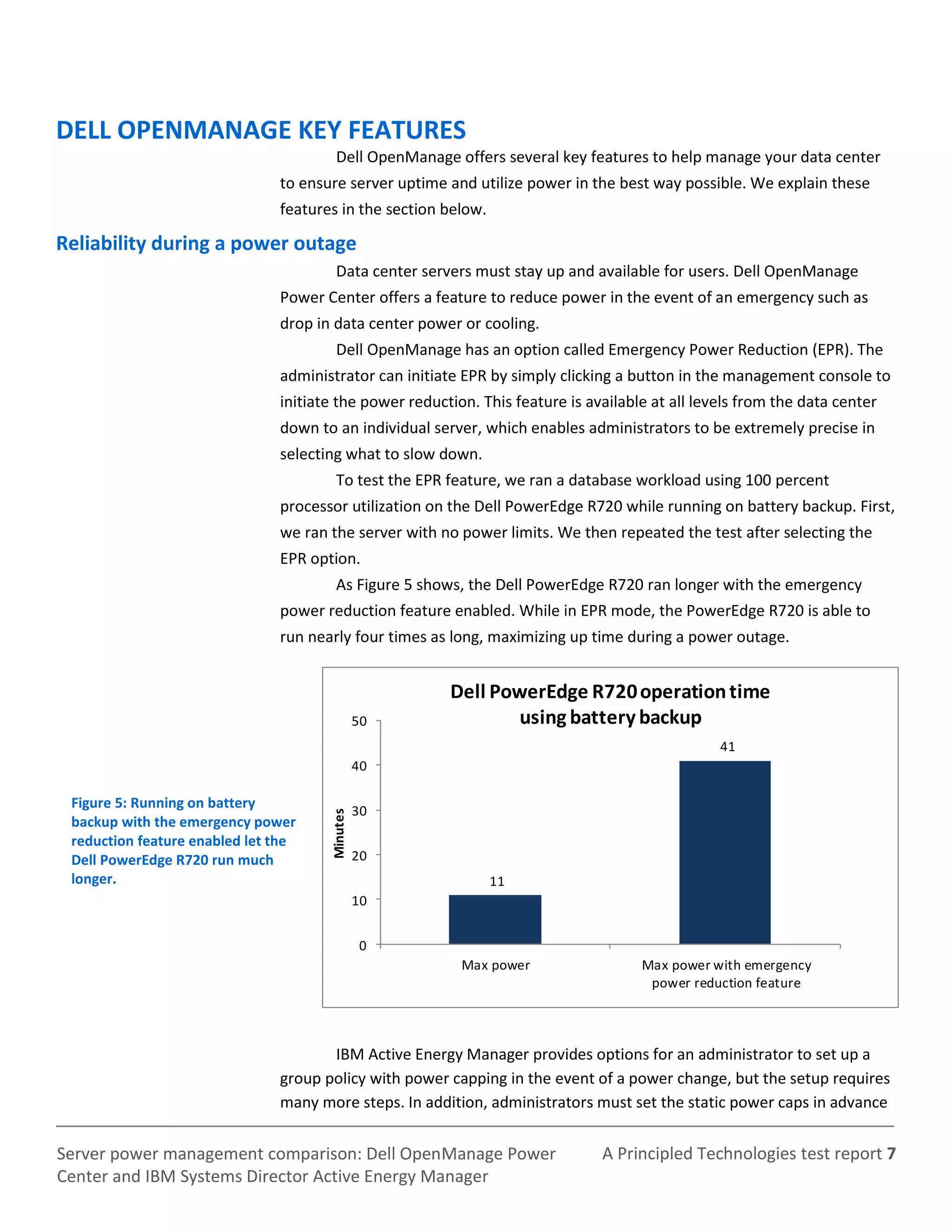
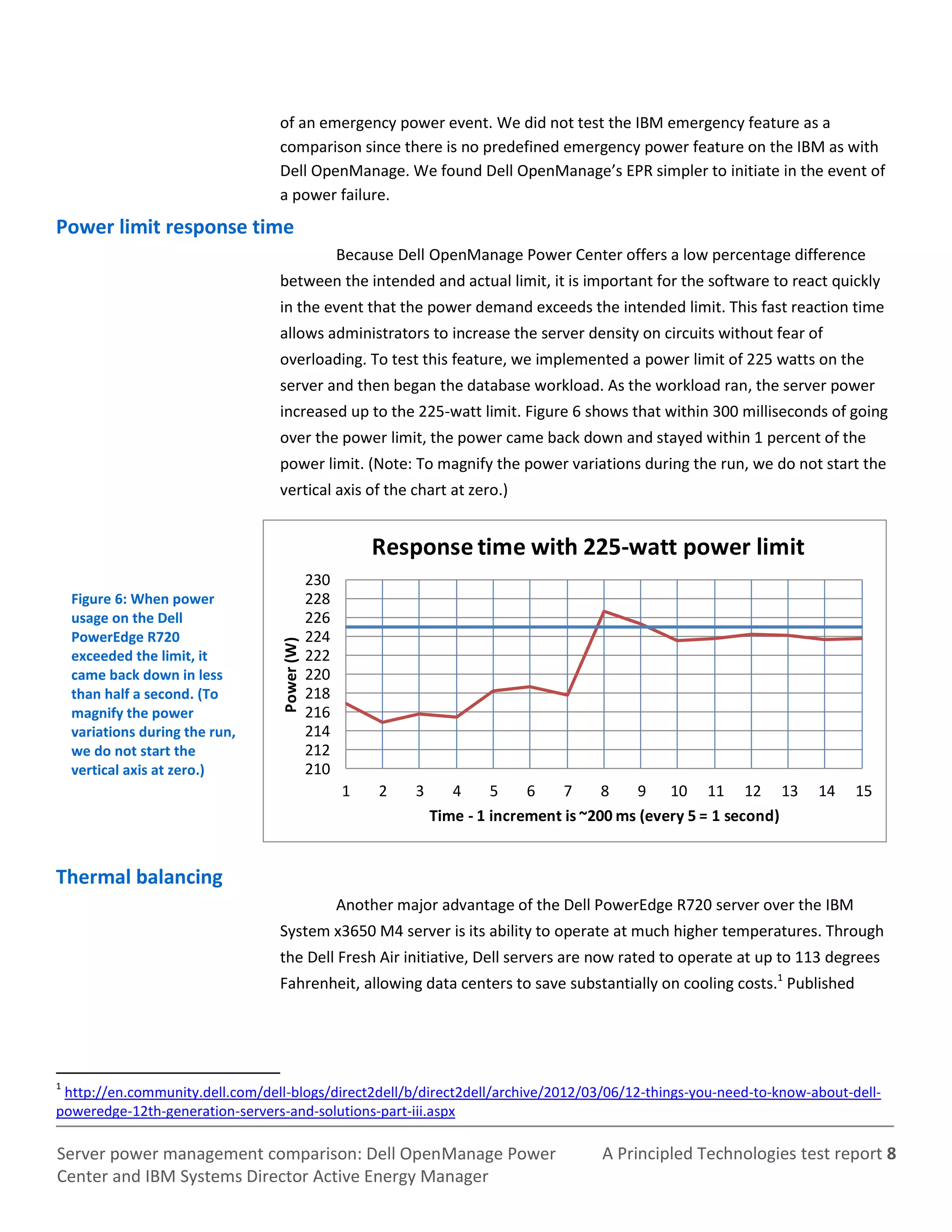

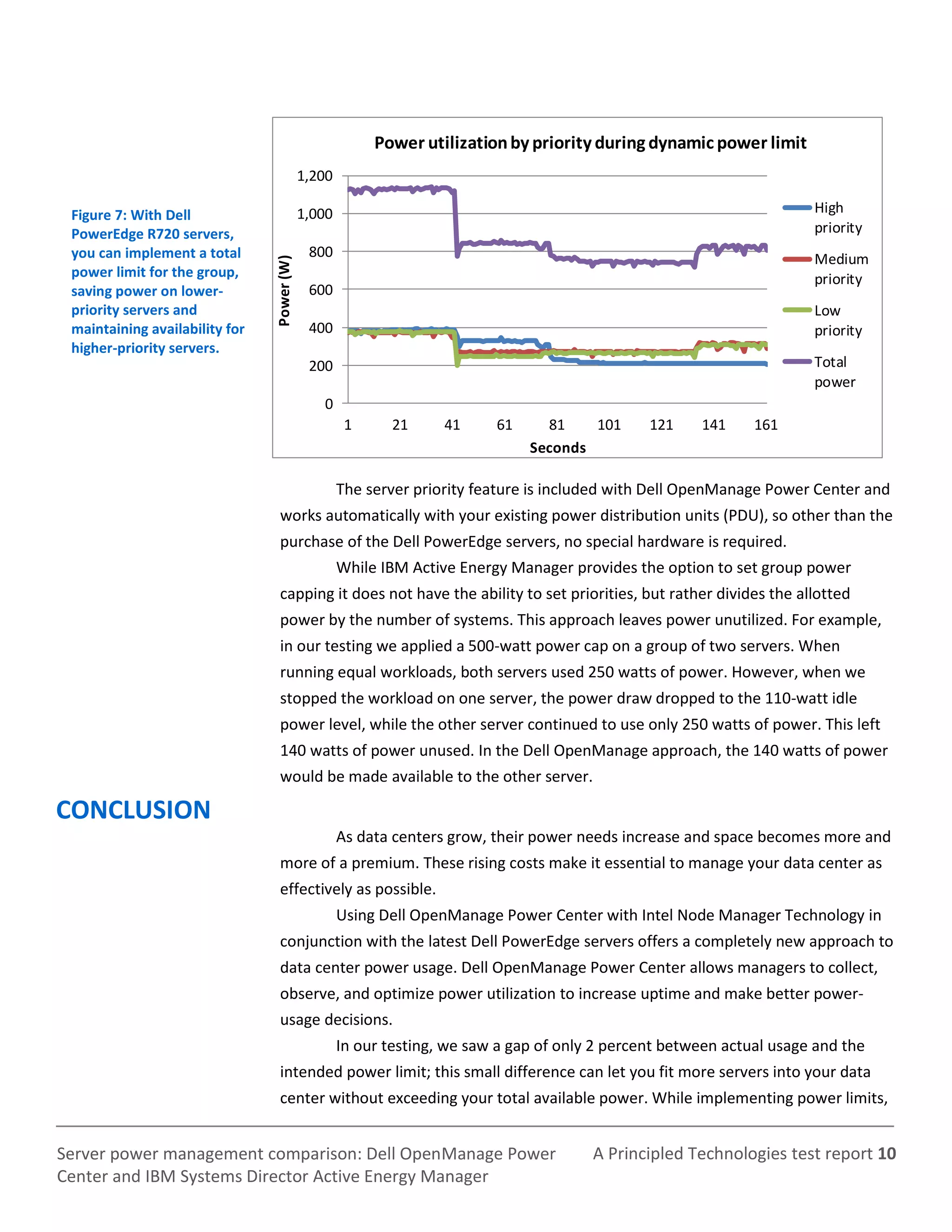

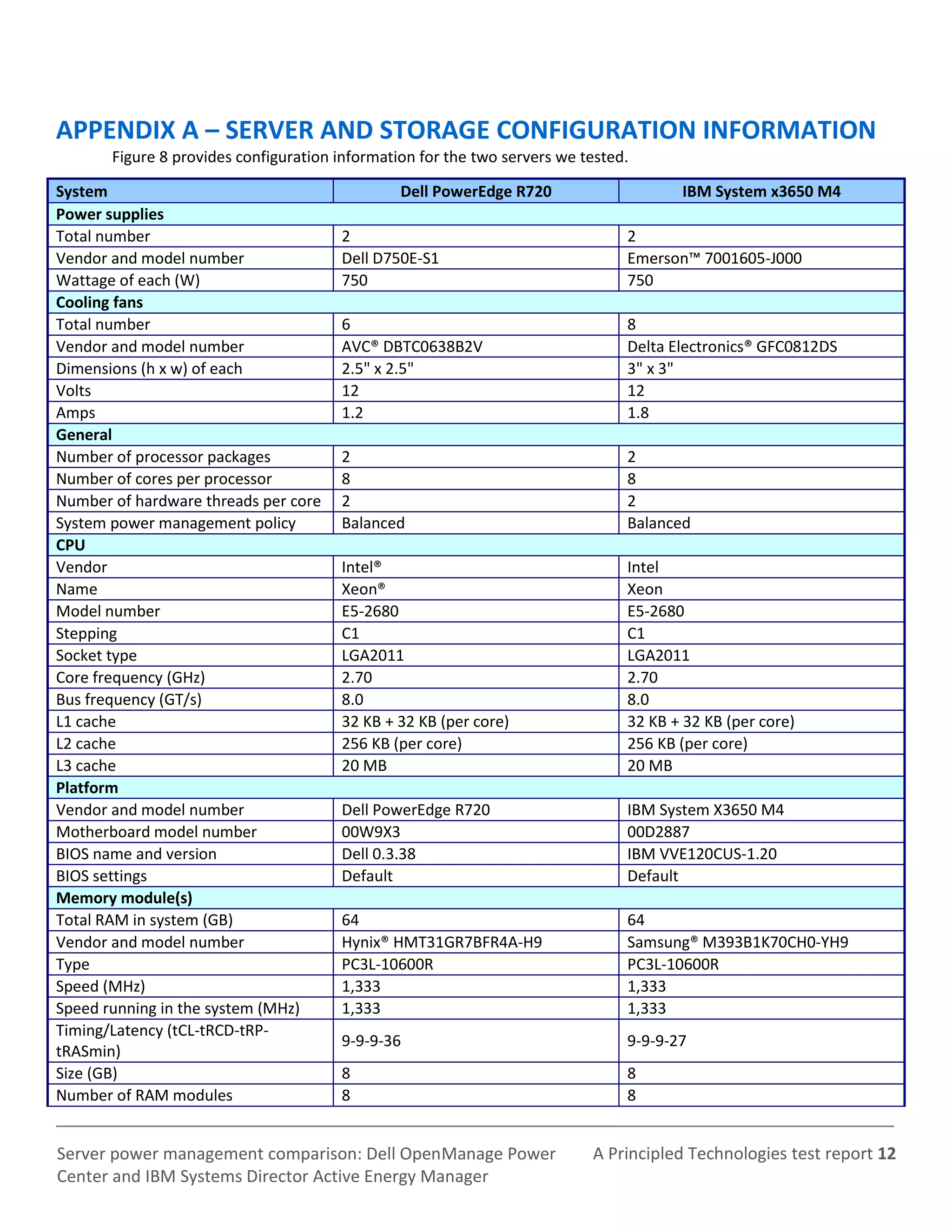
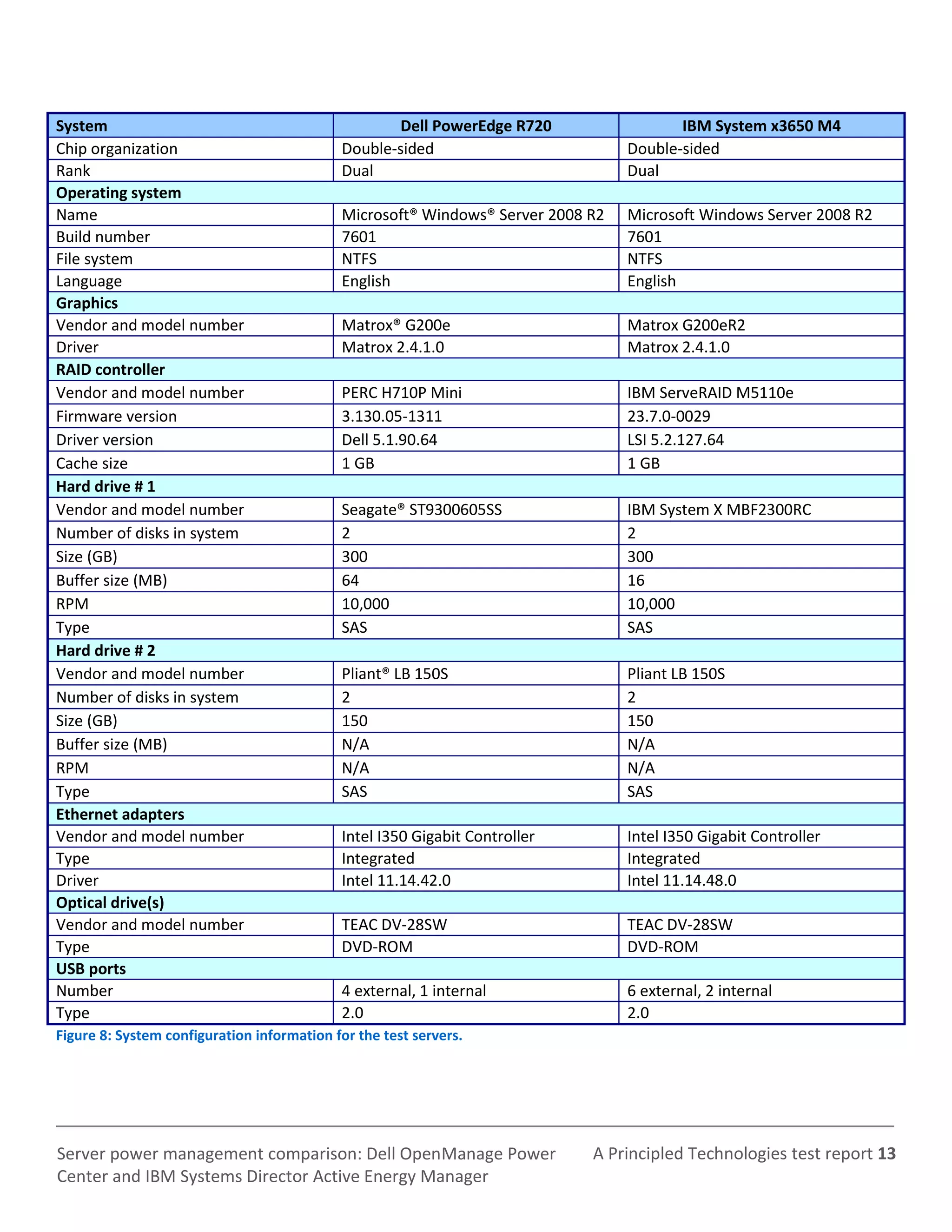
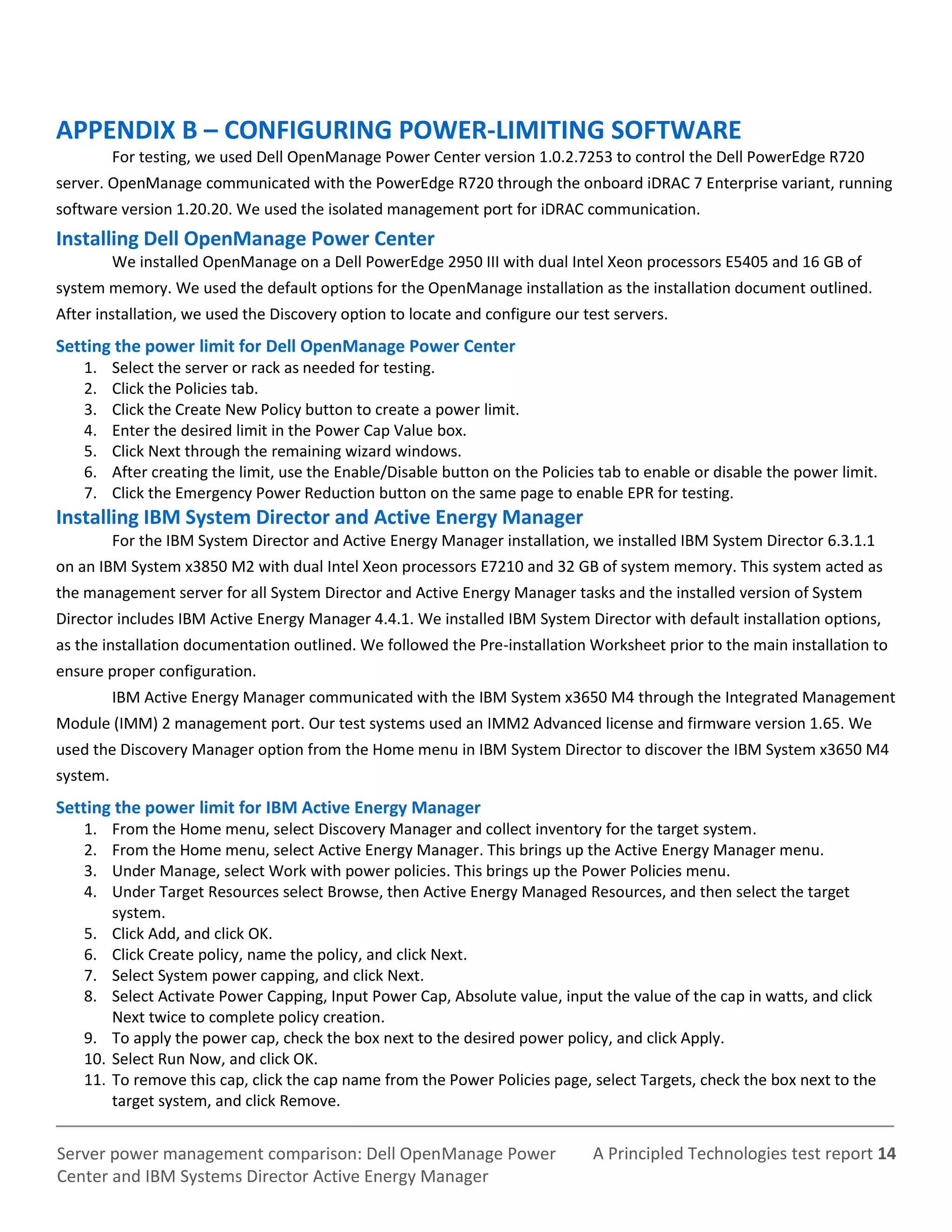
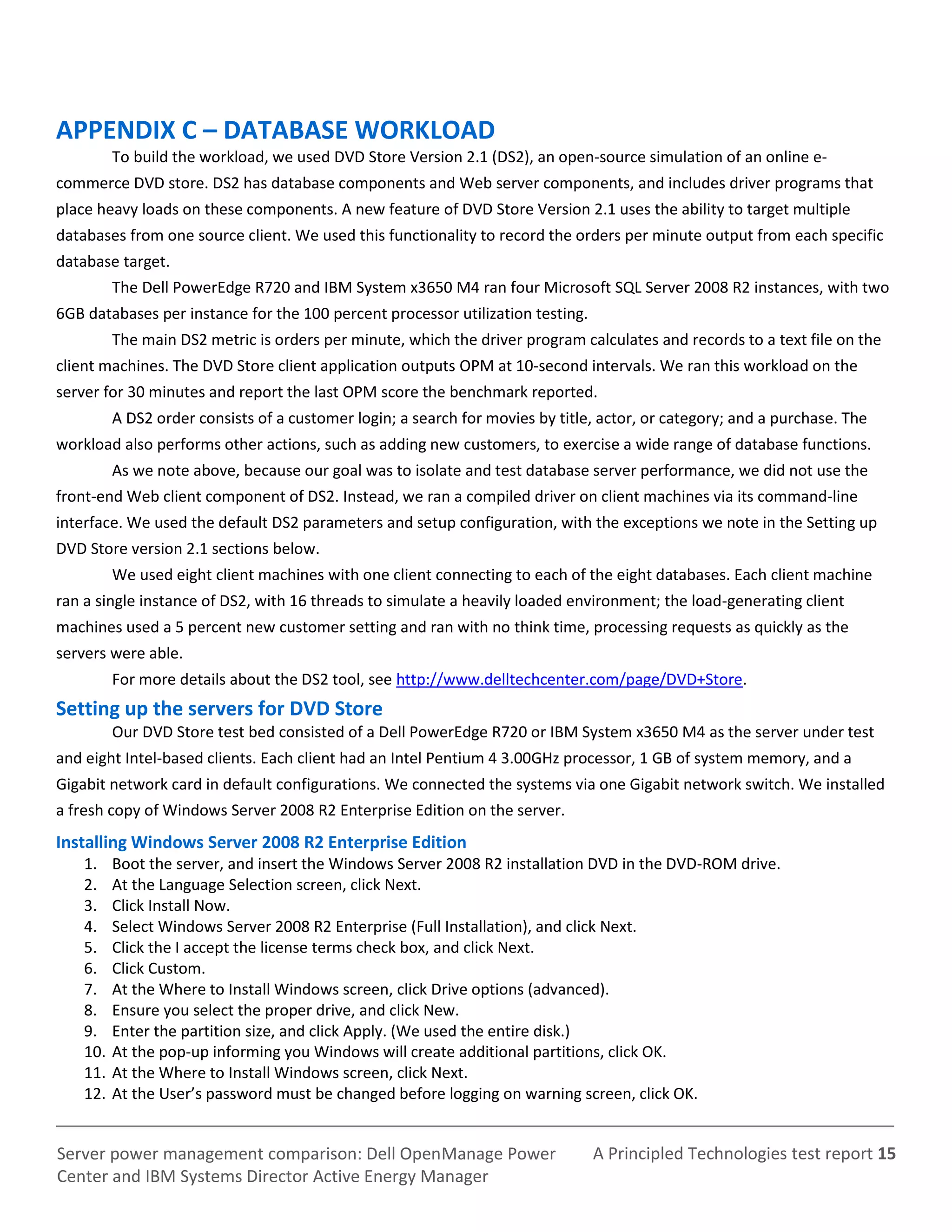
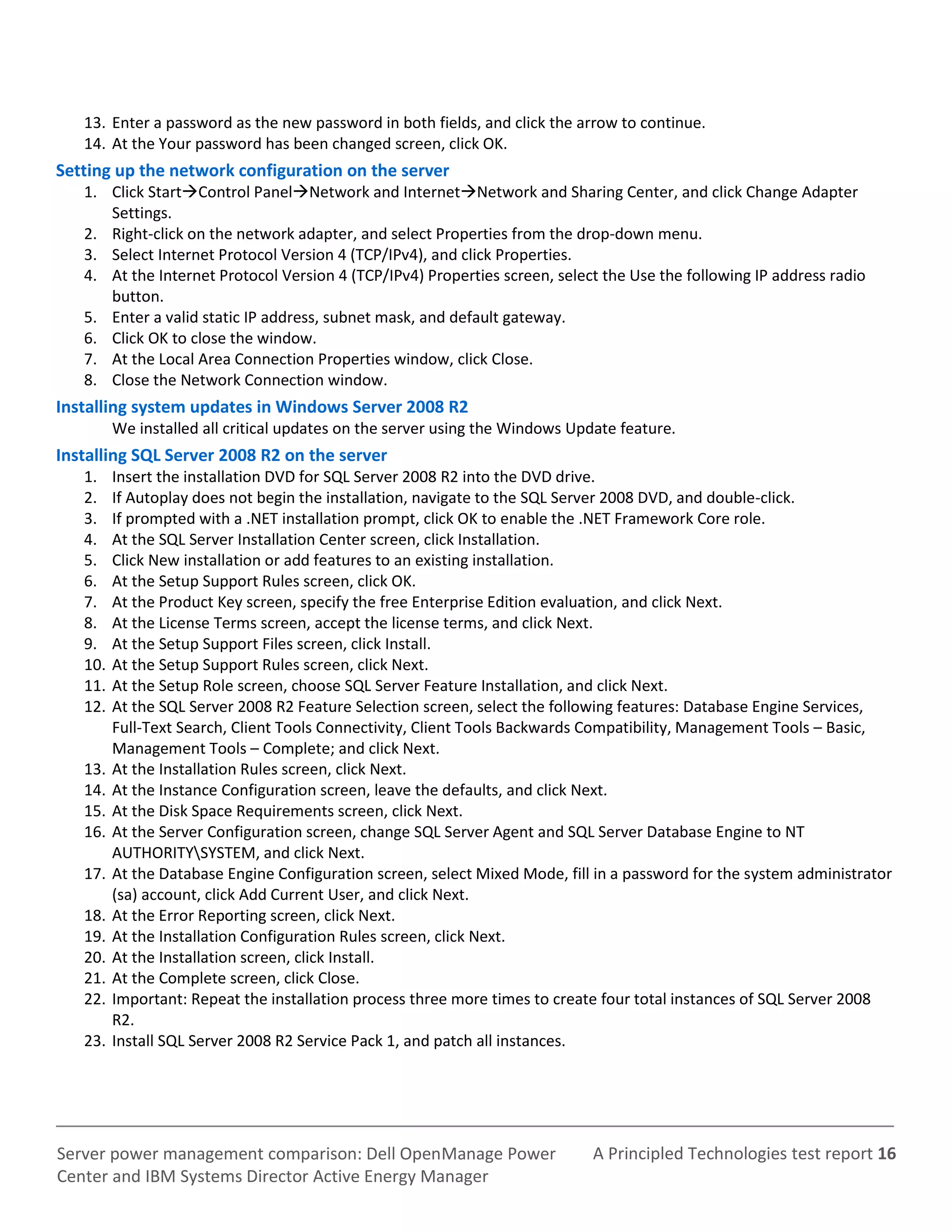
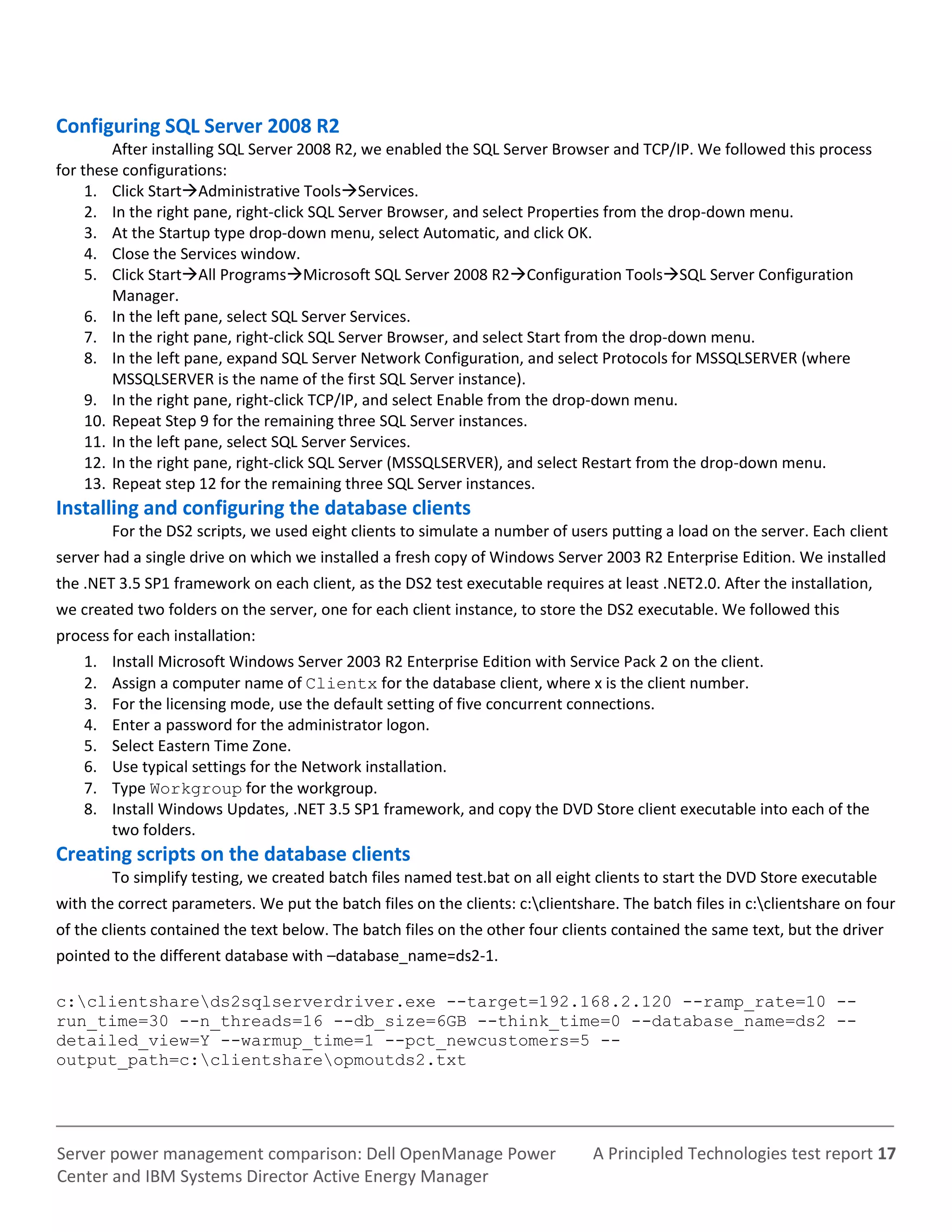
![A Principled Technologies test report 18Server power management comparison: Dell OpenManage Power
Center and IBM Systems Director Active Energy Manager
Setting up DVD Store version 2.1
Data generation overview
We generated the data using the Install.pl script included with DVD Store version 2.1, providing the parameters
for our 6GB database size and the database platform on which we ran - Microsoft SQL Server. We ran the Install.pl script
on a utility system running Linux. The Install.pl script also generated the database schema.
After processing the data generation, we transferred the data files and schema creation files to a Windows-
based system running SQL Server 2008 R2 SP1. We built the 6GB database in SQL Server 2008 R2 SP1, and then
performed a full backup, storing the backup file on the C: drive for quick access. We used that backup file to restore on
the server between test runs.
The only modification we made to the schema creation scripts were the specified file sizes for our database. We
deliberately set the file sizes higher than necessary to ensure that no file-growth activity would affect the outputs of the
test. Besides this file size modification, the database schema was created and loaded according to the DVD Store
documentation. Specifically, we followed the steps below:
1. We generated the data and created the database and file structure using database creation scripts in the DS2
download. We made size modifications specific to our 6GB database and the appropriate changes to drive
letters.
2. We transferred the files from our Linux data generation system to a Windows system running SQL Server.
3. We created database tables, stored procedures, and objects using the provided DVD Store scripts.
4. We set the database recovery model to bulk-logged to prevent excess logging.
5. We loaded the data we generated into the database. For data loading, we used the import wizard in SQL Server
Management Studio. Where necessary, we retained options from the original scripts, such as Enable Identity
Insert.
6. We created indices, full-text catalogs, primary keys, and foreign keys using the database-creation scripts.
7. We updated statistics on each table according to database-creation scripts, which sample 18 percent of the
table data.
8. On the SQL Server instance, we created a ds2user SQL Server login using the following Transact SQL (TSQL)
script:
USE [master]
GO
CREATE LOGIN [ds2user] WITH PASSWORD=N’’,
DEFAULT_DATABASE=[master],
DEFAULT_LANGUAGE=[us_english],
CHECK_EXPIRATION=OFF,
CHECK_POLICY=OFF
GO
9. We set the database recovery model back to full.
10. We created the necessary full text index using SQL Server Management Studio.
11. We created a database user and mapped this user to the SQL Server login.
12. We then performed a full backup of the database. This backup allowed us to restore the databases to a pristine
state relatively quickly between tests.
Figure 9 shows our initial file size modifications.](https://image.slidesharecdn.com/ptpaperompcvibmactiveenergymanagernov20121-170716152310/75/Competitive-Analysis-Dell-Open-Manage-Power-Center-vs-IBM-Active-Energy-Manager-18-2048.jpg)

